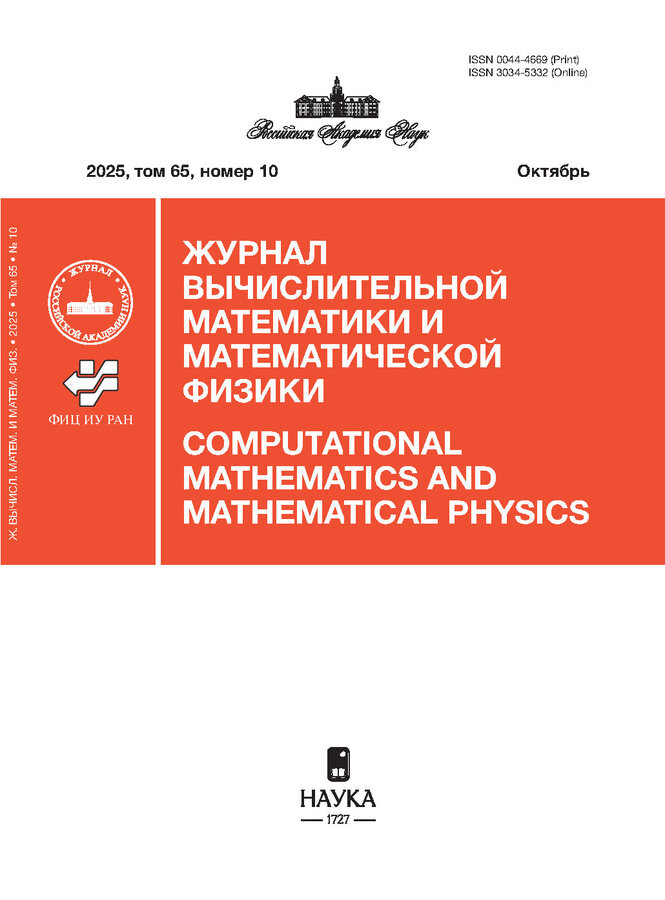LORENZ MAJORIZATION AND PIGOU—DALTON TRANSFERS IN THE RAMSEY—BEWLEY MODEL
- Authors: Parastaev G.S1,2, Shananin A.A3,4,5,6,7
-
Affiliations:
- Lomonosov Moscow State University
- Federal Research Center "Computer Science and Control" of the Russian Academy of Sciences
- Federal Research Center “Computer Science and Control” of the Russian Academy of Sciences
- Moscow Center of Fundamental and Applied Mathematics, Lomonosov Moscow State University
- Moscow Institute of Physics and Technology (National Research University)
- Peoples’ Friendship University of Russia (RUDN University)
- Federal State Budgetary Institution “All-Russian Research Institute of Labor” of the Ministry of Labor of the Russian Federation
- Issue: Vol 65, No 10 (2025)
- Pages: 1608-1624
- Section: Optimal control
- URL: https://rjmseer.com/0044-4669/article/view/695944
- DOI: https://doi.org/10.31857/S0044466925100012
- ID: 695944
Cite item
Abstract
In this paper, a model of the evolution of the Lorenz curve, describing the distribution of income between economic agents, is proposed. It is proved that the evolution of income distribution is consistent with Lorenz majorization in the Ramsey—Bewley model. A Pigou—Dalton transfer (tax and subsidy) system, which generates a stationary income distribution chosen by the welfare state, is constructed. Numerical calculations allow us to formulate a conjecture about the stability of the Lorenz curve corresponding to the selected income distribution.
About the authors
G. S Parastaev
Lomonosov Moscow State University; Federal Research Center "Computer Science and Control" of the Russian Academy of Sciences
Email: parastaev1996@yandex.ru
Moscow, Russia; Moscow, Russia
A. A Shananin
Federal Research Center “Computer Science and Control” of the Russian Academy of Sciences; Moscow Center of Fundamental and Applied Mathematics, Lomonosov Moscow State University; Moscow Institute of Physics and Technology (National Research University); Peoples’ Friendship University of Russia (RUDN University); Federal State Budgetary Institution “All-Russian Research Institute of Labor” of the Ministry of Labor of the Russian Federation
Email: alexshan@yandex.ru
Moscow, Russia; Moscow, Russia; Dolgoprudny, Russia; Moscow, Russia; Moscow, Russia
References
- Bourguignon F., Scott-Railton T. The Globalization of Inequality. Princeton and Oxford: Princeton University Press, 2015.
- Aghion P., Williamson J. G. Growth, Inequality and Globalization: Theory, History and Policy. Cambridge: Cambridge University Press, 1999.
- Atkinson A. B. Inequality: What Can Be Done? Cambridge: Harvard University Press, 2015.
- Piketty T., Goldhammer A. Capital in the Twenty-First Century. Cambridge: The Belknap Press of Harvard University Press, 2014.
- Piketty T., Goldhammer A. Capital and Ideology. Cambridge: The Belknap Press of Harvard University Press, 2020.
- Ramsey F. P. A Mathematical Theory of Saving // Econ. J. 1928. V. 38. № 152. P. 543–559.
- Bewley T. F. An integration of equilibrium theory and turnpike theory // J. Math. Econ. 1982. V. 10. P. 233–267.
- Espino E. On Ramsey’s conjecture: efficient allocations in the neoclassical growth model with private information // J. Econ. Theory. 2005. V. 121. № 2. P. 192–213.
- Becker R. A. Equilibrium Dynamics with Many Agents. In: Dana R.-A., Le Van C., Mitra T., Nishimura K. Handbook on Optimal Growth 1: Discrete Time. Berlin: Springer, 2006. P. 385–442.
- Bosi S., Seegmuller T. On the Ramsey equilibrium with heterogeneous consumers and endogenous labor supply // J. Math. Econ. 2010. V. 46. № 4. P. 475–492.
- Mitra T., Sorger G. On Ramsey’s conjecture // J. Econ. Theory. 2013. V. 148. № 5. P. 1953–1976.
- Борисов К. Ю., Пахиш М. А. Модели экономического роста с неоднородным дисконтированием // Ж. вычисли. матем. и матем. физ. 2023. Т. 63. № 3. С. 355–379.
- Lorenz M. O. Methods of measuring concentration of wealth // Publ. Am. Stat. Assoc. 1905. V. 9. № 70. P. 209–219.
- Marshall A. W., Olkin I., Arnold B. C. Inequalities: Theory of Majorization and Its Applications. Second Edition. New York: Springer, 2011.
- Парастаев Г. С., Шананин А. А. Гипотеза Рамсея о социальной стратификации как принцип отбора по Фишеру // Ж. вычисли. матем. и матем. физ. 2024. Т. 64. № 12. С. 2420–2448.
- Duesenberry J. S. Income, Saving and the Theory of Consumer Behavior. Cambridge: Harvard University Press, 1949.
- Асеев С. М., Бесов К. О., Кряжимский А. В. Задачи оптимального управления на бесконечном интервале времени в экономике // Успехи матем. наук. 2012. Т. 67. Вып. 2 (404). С. 3–64.
- Hartman P. Ordinary differential equations. Second Edition. Philadelphia: Society of Industrial and Applied Mathematics, 2002.
- Alvaredo F., Atkinson A. B., Piketty T., Saez E. World inequality database [Электронный ресурс] / WID.world, 2024. http://wid.world/data (дата обращения: 07.07.2025)
Supplementary files











